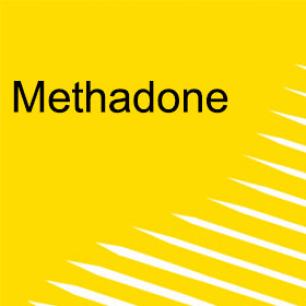Methadone
done, the done
What is methadone?
Methadone is a prescription opioid medicine with a range of uses, including chronic non-cancer pain and cancer pain and, more commonly, to treat opioid dependence.
It is a common opioid agonist treatment/therapy (OAT). Those participating in a methadone treatment program are generally provided with a daily dose of the medicine in an oral solution or syrup, which is swallowed. Methadone is prescribed by a doctor as part of a treatment plan, with dose and treatment duration based on the needs of the individual. .
By providing a regular, stable opioid dose, methadone removes the need for additional opioids and helps to stabilise opioid-dependent individuals. Methadone can also facilitate changes in the routines and habits that may be associated with the use of heroin or other opioids. This can help a person achieve their treatment goals, which may be to become abstinent, or reduce their opioid use.
Opioid dependence treatment using methadone can be long-term (maintenance) lasting months or years, or short-term (withdrawal) lasting approximately five to 14 days.
What are the effects?
Methadone is a synthetic opioid agonist that effects the brain in the same way as morphine and heroin (Quick Guide to Drugs and Alcohol, 2017).
The most common side effects of methadone include:
- Sedation
- Sweating
- Constipation
- Lowered sex drive
- Aching muscles and joints
- Itchy skin
Less common side effects include:
- Light headedness or dizziness
- Narrowing of pupils
- Impaired night vision
- Shallow breathing
Other effects such as loss of appetite, stomach pain, nausea and vomiting can usually be reduced by adjusting the dose prescribed.
Methadone and buprenorphine (see buprenorphine fact sheet) maintenance have been extensively researched, and have been demonstrated to be associated with substantial reductions in opioid use, mortality and criminality, as well as improvements in mental and physical health (Darke, Lappin & Farrell, 2019).
When taken as prescribed in regular doses as part of a treatment program, methadone generally has few long-term effects on health.
What are the risks?
Mixing methadone with other drugs
This risk of overdose is increased when methadone is combined with other sedatives, like sleeping pills or alcohol.
Toxicity and overdose
As with all opioids, methadone has been associated with non-medical use and fatal
overdoses. Methadone (like other opioids) will depress respiration, particularly in higher
doses, or in people who are not tolerant to opioids.
Dependence and withdrawal
Withdrawal from long-term use of methadone may produce some symptoms similar to those experienced through heroin withdrawal. Symptoms tend to be milder than for heroin but may occur over a longer period.
How many people use methadone?
According to the Australian Institute of Health and Welfare, on a snapshot day in June 2019, 50,945 people in Australia were on a course of pharmacotherapy treatment for opioid dependence. Methadone was the most commonly prescribed drug (61 percent of clients) (AIHW, 2020).
Emergency info
If you, or someone around you, is experiencing undesired or distressing psychological or physical symptoms from the intake of alcohol or other drugs please seek immediate medical attention.
If you need urgent help from ambulance services call Triple Zero (000). If a person has been mixing drugs with alcohol or other drugs, tell the paramedic exactly what has been taken.
Services
For free and confidential advice about alcohol and other drugs, call the National Alcohol and Other Drug hotline on 1800 250 015.
The hotline will automatically direct you to the Alcohol and Drug Information Service in your state or territory.
More resources
The Illicit Drug Reporting System is an Australian monitoring system that identifies emerging trends of local and national interest in illicit drug markets.
The Ecstasy and Related Drugs Reporting System is an Australian monitoring system for ecstasy and related drugs that identifies emerging trends of local and national interest.
The Clinician’s Guide to Illicit Drugs and Health examines the health effects of each of the major illicit drugs.
The Australian Institute of Health and Welfare collects information on alcohol and tobacco consumption, and illicit drug use among the general population in Australia.
The Australian Bureau of Statistics is Australia’s national statistical agency, providing official statistics on a range of economic, social, population and environmental matters of importance to Australia.
Sources
A Quick Guide to Drugs and Alcohol (3rd ed.) (2017). Sydney, Australia: Drug Info.
Australian Institute of Health and Welfare (2020). National Opioid Pharmacotherapy Statistics Annual Data collection 2019. Retrieved from https://www.aihw.gov.au/reports/alcohol-other-drug-treatment-services/national-opioid-pharmacotherapy-statistics-2019
Darke, S., Lappin, J., & Farrell, M. (2019). The Clinician’s Guide to Illicit Drugs and Health, Great Britain: Silverback Publishing.


